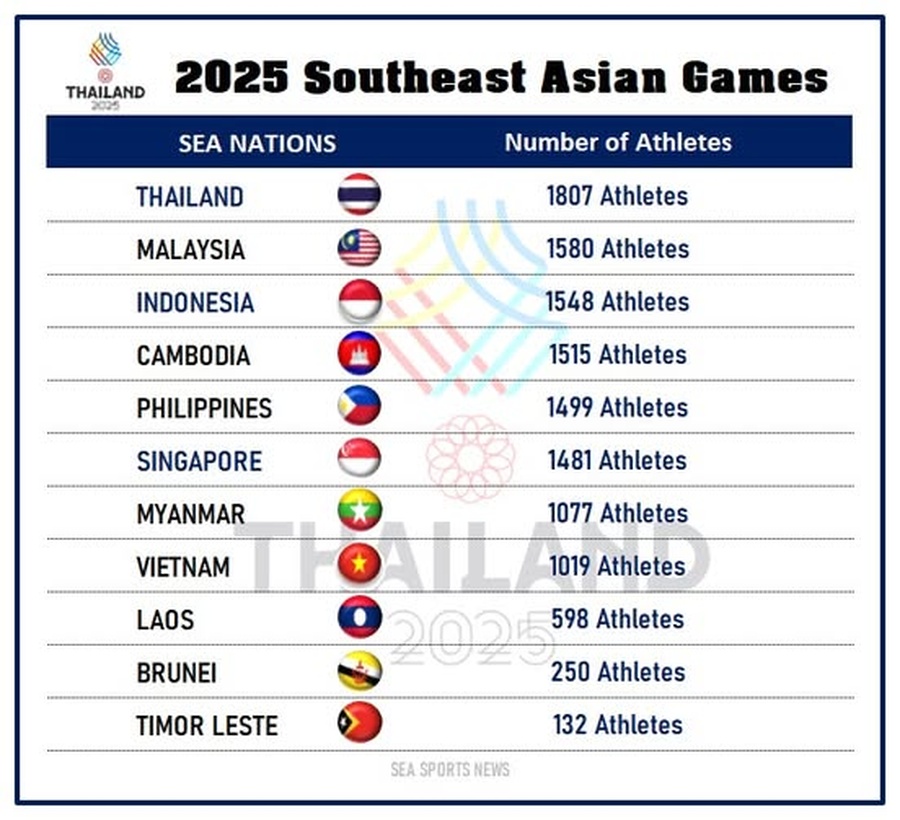
Laos Gears Up for the 33rd SEA Games in Thailand
Vientiane, 2025 — The Laos National Olympic Committee (NOC) is intensifying its preparations for the upcoming 33rd Southeast Asian (SEA) Games, set to take place in Thailand from 9–20 December 2025. A recent meeting between the NOC and national sports federations signals a strong commitment from Laos to raise its competitive performance and regional sports profile.
Strategic Meeting Between NOC and Sports Federations

On March 27, 2025, top leaders from the Laos NOC convened with heads of various national sports federations to coordinate their strategy for the SEA Games. OCA Key discussion points included:
-
Logistics & Participation: How many athletes to send, travel plans, accommodation, and coordination between different sports.
-
Training & Competition Strategy: Federations are planning training cycles and selection criteria for athletes to maximize their potential at the Games.
-
Event Distribution: The Games will be held across three provinces — Bangkok, Chonburi, and Songkhla.
Scale of the Games & What’s at Stake
-
The 33rd SEA Games will feature 50 medal sports and 3 demonstration sports, making it a massive event for regional athletes.

-
According to the Olympic Council of Asia (OCA), the entry list shows Laos is sending a meaningful delegation.
-
The opening ceremony is scheduled for 9 December 2025, and the closing on 20 December.
Lao Athletes: Ambitious But Realistic Goals
-
Talent Pipeline Strengthening
The NOC is leveraging this event not just for medal chasing, but also to build experience among younger athletes. By working closely with federations now, they hope to nurture athletes who can compete strongly in future regional and international competitions. -
Scaling Sports That Matter
Laos appears to be prioritizing certain sports where it can be competitive but also gain exposure. While the NOC’s full roster by sport is not publicly detailed yet, the preparation strategy suggests a balanced focus on both established and emerging disciplines. -
Maximizing Efficiency
Given the logistical complexity of competing in three provinces, Laos’ early planning is key. By ironing out travel, housing, and competition logistics now, they reduce the risk of last-minute issues.
Challenges Laos Might Face
-
Tight Registration Deadline: For the SEA Games, each country must submit its “Entry by Name” (final athlete list) by 1 September 2025, according to OCA regulations. OCA This puts pressure on national federations to finalize athlete selection soon.
-
Regulatory Compliance: The SEA Games Organizing Committee has announced stricter athlete qualification checks, including passport and eligibility verification. Lao Dong Laos must ensure its athletes meet all requirements to avoid disqualification.
-
Budget and Resources: Sending a large delegation with full support (training, health, logistics) requires considerable financial and institutional resources. For a smaller NOC like Laos, allocating these resources well is critical.
Why This Matters for Laos
-
Elevating National Sporting Prestige: Strong performance at SEA Games is a way for Laos to boost its regional reputation and showcase its athletic talent.
-
Long-Term Athlete Development: The Games are not just a one-time competition — they’re an important stepping stone for Laotian athletes to develop for bigger multi-sport events.
-
Strengthening National Sporting Infrastructure: The discussions around logistics, training, and participation could lead to more formalized athlete development programs, better training facilities, and higher-quality national competitions.
-
Regional Diplomacy Through Sport: Participation in SEA Games helps Laos engage with neighboring countries, reinforcing soft power, unity, and mutual development via sports.
What to Watch Next
-
Final Athlete Roster: Whether Laos will send its full-strength team, and how many athletes it commits to each sport.
-
Training Camps: Whether Laos will send athletes for training abroad or hold intensive national camps.
-
Performance Targets: If the NOC or federations publicly announce medal targets, or specific sports they consider “medal hopefuls.”
-
Support Structures: How much state or private funding will go into the SEA Games delegation (travel, medical, coaching).
-
Results & Legacy: After the Games, how Laos measures success — by medals, but also by athlete development and national recognition.
Bottom Line: Laos is clearly taking the 33rd SEA Games seriously. The early and structured planning by the NOC and its federations shows ambition and prudence. For Laos, success in Thailand could mean not just medals — but long-term gains for its sports ecosystem.
.png?width=300&height=100&name=t%20(5).png)

